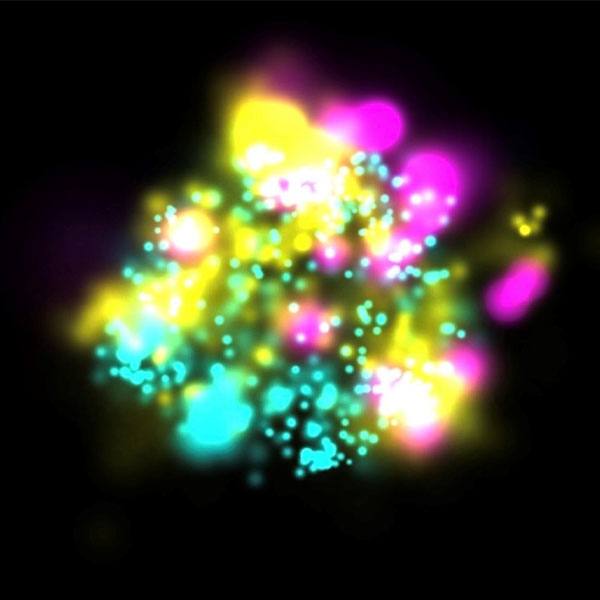-
Cardiovascular
Science Saturday: Across time, place to find cures for inherited heart diseases
Five years ago, Jay Schneider, M.D., Ph.D., was running a lab at The University of Texas Southwestern Medical Center in Dallas. The lab focused on researching cures for the genetic muscular-wasting disorder, Duchenne muscular dystrophy. His wife, Alice Chang, M.D., had accepted an offer to work at Mayo Clinic in Rochester, Minnesota, two years before. The family was split between the Lone Star State and the Land of 10,000 Lakes, meaning Dr. Schneider spent many weekends traveling to be with his family in downtown Rochester.
While attending a conference, Dr. Schneider struck up a conversation with Timothy Nelson, M.D., Ph.D., a Mayo Clinic cardiologist who studies congenital heart disease. Dr. Nelson presented at the conference on a gene-edited pig model his team used to study a rare congenital — meaning present from birth — heart mutation. One thing led to another and Dr. Schneider accepted Dr. Nelson's invitation to take a sabbatical from his Texas lab and came to Mayo Clinic. Also, despite focusing on a different disease area, Dr. Schneider thought he had a clue about what might be going wrong in the heart failure patients.

While most researchers are funded to find answers to a specific question, research teams are always open to how their findings might be applied in other fields of study. That's what happened when Mayo Clinic researchers investigating heart disease discovered previously unknown cellular changes in heart tissue. They pivoted to investigate how it applied to neurodegenerative disease research. At Mayo Clinic, it's a no-brainer ― diverse teams find cures faster for patients most in need.
Heart Disease Across Time
A decade ago, Timothy Olson, M.D., a Mayo Clinic cardiologist, studied a form of heart failure called dilated cardiomyopathy. The disease makes it harder for the heart muscle to pump blood to the rest of the body. Using gene sequencing, Dr. Olson traced the disease to a genetic mutation on a gene called RBM20, which was a surprise at the time, Dr. Schneider says. Heart failure was thought to be related to genes for proteins that helped the heart contract. After all, failure to do so was the hallmark of the disease. But RBM20 created a different type of protein called a regulatory protein.
"RBM20 is a protein that links to RNA, the messenger code in the cells, and regulates where it is cut. In turn, this splicing regulates exactly what proteins are made," Dr. Schneider explains. "To put it simply, RBM20 interprets differently the blueprint for building proteins, which affects everything in the cell and leads to a new mechanism of disease."

Dr. Olson has been developing a library, or biorepository, of tissue samples and data from consenting patients with dilated cardiomyopathy, and also created induced pluripotent stem cell lines from patient tissues. This foresight provided a treasure trove of data to compare how RBM20 affects fatal cellular changes in the heart, and provided a pool of evidence for Drs. Schneider and Nelson's investigation. Dr. Schneider knew the clumping of RNA-binding proteins, such as RBM20, play a large role in neurodegenerative disease such as Alzheimer's disease, and Lou Gehrig's disease, also known as amyotrophic lateral sclerosis or ALS.
He wondered if the same cellular progression could be a cause for degeneration in the heart?
Everything in Its Place
"Scientific thought for many years reasoned that the cell is like a pot of soup, with molecules sloshing around in liquid inside the cell cytoplasm," says Dr. Schneider. "But the inside of the cell is really more like a gel, and everything has its specific place."
Proteins are formed in compartments that do not have a membrane around them. Everything in the cell is organized into these membraneless organelles, also called RNA protein granules. Molecules self-assemble in the protein granules, liquid in liquid yet separate.

"It's not like a pot of soup, but more like a dresser drawer of neatly folded molecules that interact with each other and are arranged in a certain way," explains Dr. Schneider.
But changes like the RBM20 gene mutation cause abnormalities in cells. The mutant protein prevents proteins from entering the nucleus of the cell to do their job, instead sending the proteins somewhere else. The misguided protein droplets accumulate until they put a chokehold on gene expression in the heart. Normal functions do not take place because everything in the cell is clogged with protein granules. The heart cells can't get rid of the granules and can't function like they're supposed to do. And the result is deadly.
For some diseases caused by this process, the granules build up slowly over a lifetime before they start to kill the cells, and that's when people realize they have the disease. The RBM20 gene accelerates the degeneration, which is why it was the ideal path to study congenital heart disease.
The Model and the Cause
Before Dr. Schneider arrived, Dr. Nelson understood the need to go back to the cause of a disease to research the cure. But this could not be done in the petri dish alone. He needed an animal model.
Through Recombinetics, a biomedical research company, Dr. Nelson used gene editing technology to introduce the RBM20 gene into an animal model, a pig. The team produced the first large animal model of human heart failure and used it to study the progress of the disease.
The animals born with RBM20 cardiomyopathy showed classic signs and symptoms of the disease. Of note, the model provided a way to accelerate the research. Because RBM20 cardiomyopathy progresses quickly, it can become apparent in humans in young adulthood and is prone to cause sudden cardiac death. The animal model provided the means to study the disease in an adult human-sized heart in four to six months instead of waiting 20 years for the condition to develop in a human. This relevance to human disease is an important aspect in receiving permission from the Food and Drug Administration to advance to clinical trials.

"With this ideal animal system to study early development of the disease in the heart, we then take those findings back into the cell culture," Dr. Nelson says. "We've bioengineered cardiac muscle from biopsies of human patients with the RBM20 mutation, and we can study the mechanism of the disease in the cell culture, bringing the focus back to the human tissue."
When Dr. Schneider joined the team, he began working on the molecular biology of the RBM20 pigs. He wanted to see what was happening at a cellular level, so he ran a simple staining test to see what proteins were collecting in the animal heart tissue. The test revealed what Dr. Schneider had suspected. The pigs' heart tissue was full of clumps containing RNA-binding protein, called granules. To see if he would find the same expression in Dr. Olson's patients, Dr. Schneider went back to the database of heart tissue samples from the RBM20 human patients.
Turns out, he'd hit a homerun. Dr. Schneider found heart tissue flooded with the same protein granules and the team had discovered a new mechanism of heart failure: a congenital degenerative disease of the heart.
The research, published in Nature Medicine, outlines the new concept that, beyond splicing, RMB20-dilated cardiomyopathy is a ribonucleoprotein granule disease similar to diseases like ALS. Better yet, they'd identified the link in an organ that is more accessible for study than the brain and spinal cord, opening up a new research option for congenital heart disease and neurodegenerative disorders.

Future focus
"This research took us to places that we did not envision at the beginning," says Dr. Nelson. "I think this RBM20 study is going to prove to be a landmark study that opens up many doors for heart disease, specifically for congenital heart disease."
With this study, he continues, the team uncovered new mechanisms for heart failure.
"I would envision the future of this work leading us to some novel therapeutic strategies that will have a real unique opportunity to treat congenital heart disease in new ways," Dr. Nelson says.
With the ability to study a pig born with heart failure, the team's next goal is to fix it and learn how to develop treatment, such as gene correction, cell therapy or drug therapy, for patients with congenital heart disease. The team is looking at using CRISPR gene editing technology to edit the pig's genes to remove the mutation, potentially in utero. This effort would be complementary to the researchers' stem cell therapy work for hypoplastic left heart syndrome because stem cells could be edited to remove a mutation before injection into the heart. Knowing the hypoplastic left heart syndrome mutation of an individual patient in utero opens up the possibility of potentially removing the mutation before birth.
"It's important to realize that there are patients and families affected by this disease today. There are kids and young adults that have heart failure because of this exact mutation. That's how this whole research started," says Dr. Nelson. "So if we can cure this pig in this model system with novel therapeutics, we're literally a half-step away from being able to launch clinical trials and test those same therapeutic strategies in patients that are affected today."
That, he says, is the future and the goal of the Todd and Karen Wanek Family Program for Hypoplastic Left Heart Syndrome.
-- Terri Malloy, December 2020
- To read more about Dr. Chang and how Mayo supports researchers who are also primary caregivers, in "Supporting the Lives of Those Who Change Lives."
- You can also read more about the Todd and Karen Wanek Family Program for Hypoplastic Left Heart Syndrome.







